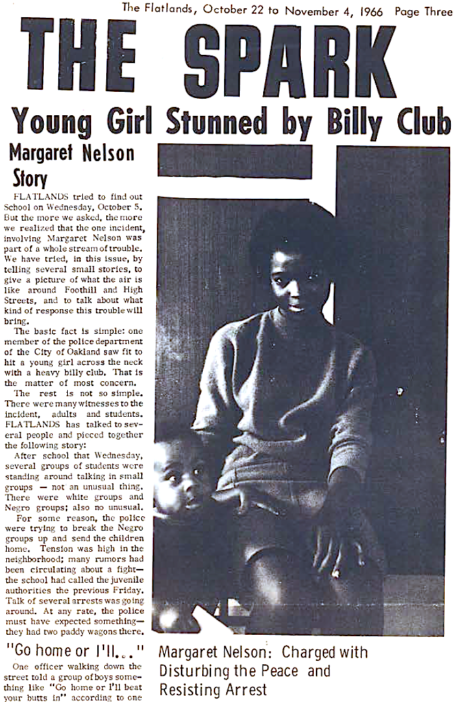The unrest at East Oakland’s Castlemont High School followed in the wake of the uprising in Hunters Point the previous month. Mere days before the long-planned Ad Hoc Committee (AHC) boycott of Oakland schools was scheduled to begin, the riots briefly attracted national attention and embarrassed Oakland’s business and political elite, which had worked strenuously to prevent such a thing from happening in their city. In an effort to shift blame, the AHC came under heavy criticism from city councillors and Board of Education members for inciting unrest in the course of the boycott campaign.
Contra this explanation by city officials, the events of October 17, 1966 (as in Watts and Hunters Point) arose from popular anger over casual abuses of police power. One such incident, predating Castlemont by two weeks but cited by many participants as a contributing factor to their anger, was the police assault on Margaret Nelson, a 15-year old Fremont High School student. As classes ended at Fremont that Wednesday, Oakland police began to harass groups of black students gathered outside the school, attempting to disperse them and telling them to “go home.”
Nelson, who was among the students in front of the school, was targeted by police when she became separated from her friends. One officer grabbed her arm, struck her in the neck with his billy club, then began to strangle her. Following this, six officers dragged her bodily into the back of a paddy wagon. The Ad Hoc Commitee echoed public outcry in calling for an end to such abuses; one member, speaking before a steering committee hearing, averred that “kids in Oakland should stay away from the schools until the policemen do.”
